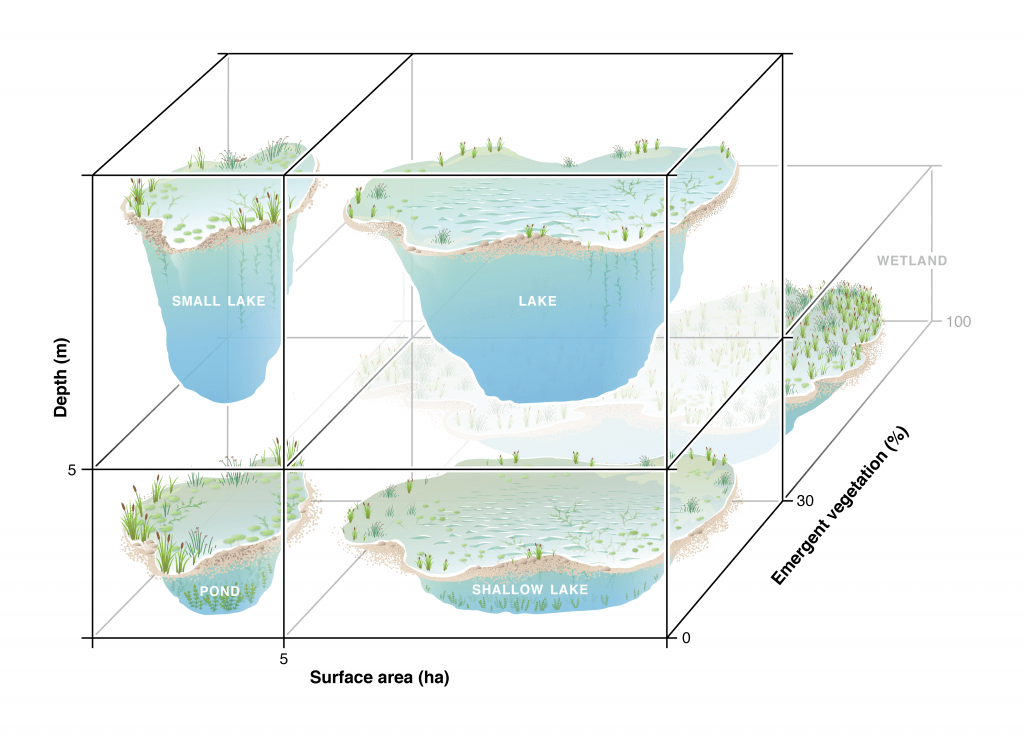In a new paper for published in Nature’s Scientific Reports, we answered an question that has plagued many scientists, policy makers, anglers, and others: “What is a Pond?” When out and about, if you see an aquatic ecosystem, everyone, regardless of training or experience seems to know the difference between a pond and a lake and a wetland (see picture below). However, there is no universal definition in the scientific community for what a pond actually is.

20 scholars from all over the world came together to answer this seemingly simple question. But when we dug a little further into it, we realized that existing in definitions in scientific literature were inconsistent and imprecise. For example, many were mostly qualitative: ponds are small, ponds are shallow, you can throw a rock across a pond but not a lake, plants grow all the way across a pond but not a lake. However, definitions were not evidence-based or functional and therefore, we weren’t sure if the definition mattered – i.e., ponds are just small lakes or lakes are just big ponds.
We found that it does actually matter – ponds function differently than lakes and wetlands and we propose a comprehensive definition that’s better suited to application by scientists and policy makers.
Our definition for a pond (see figure below) is that “ponds are small and shallow waterbodies with a maximum surface area of 5 ha (12 acres), a maximum depth of 5 m (16 feet), more than 70% open water without emergent vegetation. Ponds will have light penetration to the sediments if water clarity permits and can be permanent or temporary and natural or human-made.”

We hope this evidence-based pond definition will inform lake, pond, and wetland science and advance the environmental and legal monitoring of ponds.
This research was done in collaboration with scientists from the Global Lake Ecological Observatory Network. Dr. Meredith Holgerson (Cornell University) was my co-lead on this manuscript, along with a core group of scientists including Dr. Katelyn King, Katie Hoffman, and Matt Farragher. Matt Farragher (Environmental Geochemical Science ’16) and another co-author, Katie Paul (Contract major, ’20), are former SUNY New Paltz undergraduates.
Please explore press about this research below:
- Wisconsin public radio interview with Dr. Holgerson
- Cornell Chronicle article
- National Science Foundation Research News
- Cosmos Magazine in Australia
